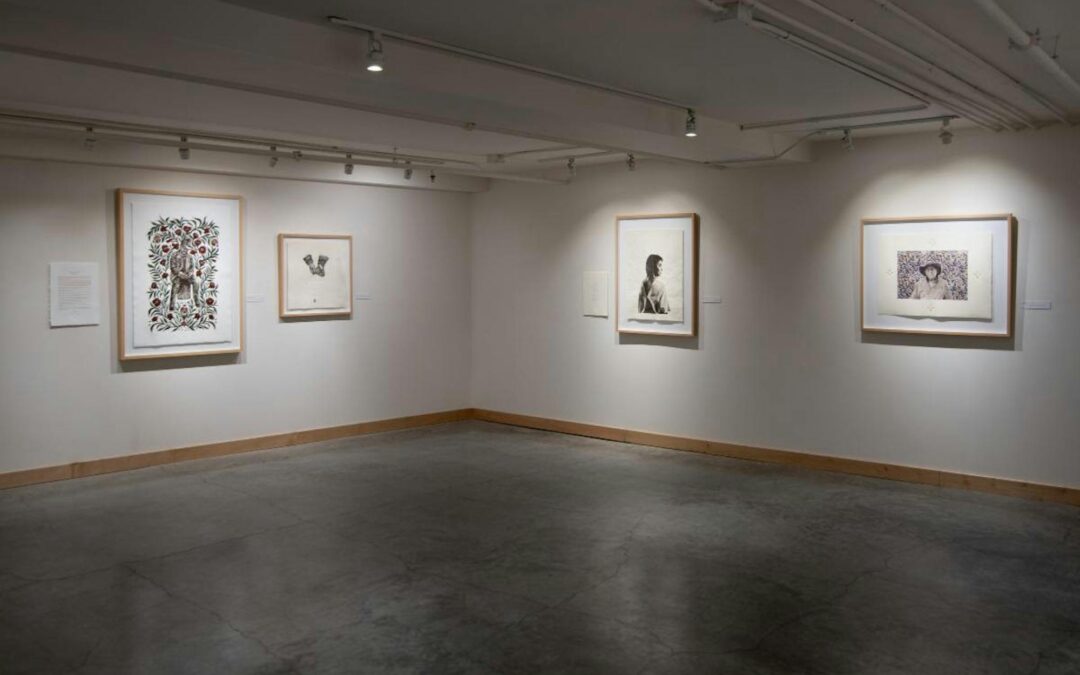“Grabando Historias,” an exhibition by Christie Tirado, made its debut March 10 at Madison’s Tandem Press art gallery. Through portraiture and the intensive practice of printing, Tirado depicts what is present, what is erased and what is preserved in narratives surrounding immigrant, migrant, familial and agricultural stories in America.
This exhibition celebrates stories untold and invites us to think: as Americans, how does our collective understanding of migration omit the realities of family life, and how do we rely on migrant support in our day-to-day life? These questions come to life through Tirado’s portraits, lithographs intaglio and relief linoleum reduction prints.
“Art has the power to tell the stories that history books often omit. It provides personal, visual and emotional connection to heritage whether through symbolism or portraiture or process,” Tirado told The Daily Cardinal.
Tirado is a bicultural Mexican American interdisciplinary artist and K-12 educator. After working as a teacher for eight years, Tirado is currently a second-year University of Wisconsin-Madison Master of Fine Arts Candidate and graduate research scholar.
Tirado’s work centers on labor-related migration, Mexican migration and interconnected cultural and societal narratives. As she carves, layers and removes the structural components of her printed artwork, she contemplates how this mirrors the realities of stories that go unnoticed in America. Immigrants and migrant workers are fundamental in maintaining America’s agricultural industries, and foreign workers ensure our food supply is sustained by disproportionate numbers. Still, immigrant and migrant labor goes overlooked due to stigma, falsehoods and dehumanization.
“Historically, the United States has relied on a lot of immigrant labor work, whether it’s for railroad construction, agriculture or other industries. The foundation of this nation was built on the backs of immigrants. Yet their contributions to this nation are always overlooked,” said Tirado.
In this exhibition, we see these stories peeled back. They reveal family lineage, labor and love.
With “grabando,” meaning engrave or record, and “historias,” referring to both stories and histories, Tirado literally carves the tales of her family and workers into her abundant prints while figuratively making note of how these narratives are often erased.
Tirado shared insight into a moment shared with her grandfather before embarking on her one-month artist-in-residency program in Veracruz, Mexico. As her grandfather plowed the Earth and she followed behind, dropping corn beads, she took a photo of him, which became the basis of a lithograph. In carving her artwork, she found a connection between her artwork and her passion for sharing untold stories.

